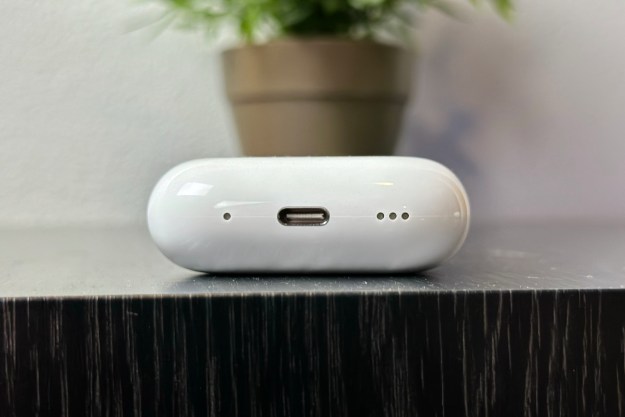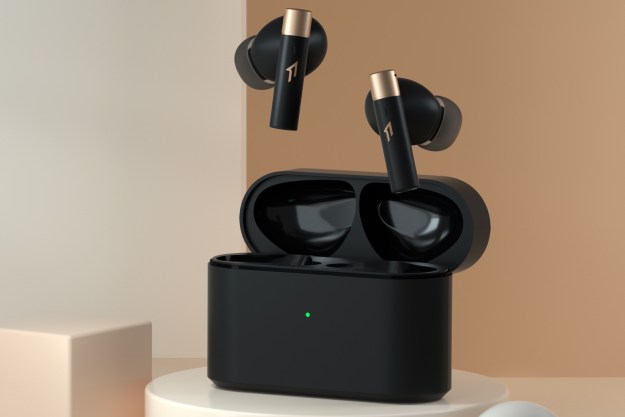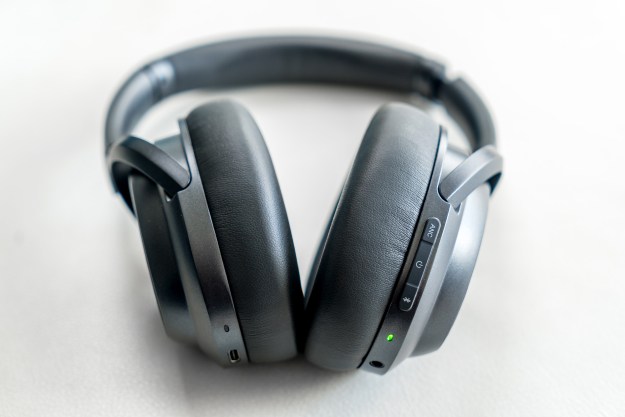
- Excellent sound quality
- Comfortable fit
- Good ANC and ambient modes
- Good battery life
- No app support
- Call quality could be better
Sony’s WH-1000XM3 and XM4 were our top choices for wireless headphones for over three years. And even now that Sony has the superb WH-1000XM5, we still find ourselves recommending the XM3 and XM4 simply because they’re still great, and yet more affordable than Sony’s new flagship. But is it possible to spend even less, and still get an XM3/XM4 experience? You may never have heard of Treblab, but one look at its Z7 Pro noise-canceling headphones should be enough to convince you that it has made it its mission to answer that question with a resounding “yes.”
But at just $160 — less than half the price of the WH-1000XM4 — is the Z7 Pro’s resemblance to Sony’s top cans only skin-deep? As you might expect, not everything is roses, but these headphones gave us plenty to think about.
What’s in the box
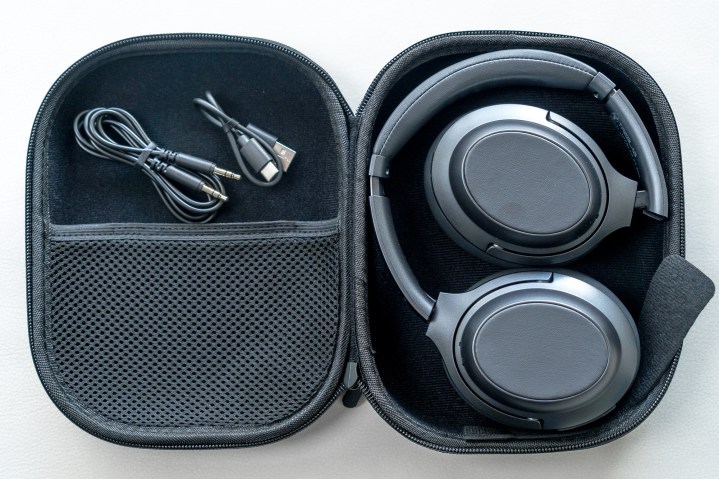
It is nice that the Z7 Pro come with a protective hard shell case, including a mesh pouch inside to store the included 3.5mm audio cable and USB-C charging cable. Our review unit didn’t have a printed user manual inside, though it is easy to find on Treblab’s website as a downloadable PDF.
Design
If imitation is the sincerest form of flattery, Treblab is trying very hard to flatter Sony. From the shape of the earcups, the folding design of the headband, and even the cool slate/charcoal tone and synthetic leather on the ear cups and headband — it all screams WH-1000. The materials felt nice, and I found wearing these headphones for long stretches never really bothered me.
The cups have an oval shape that doesn’t press or clamp hard, a nod also to the headband’s flexibility and lack of stiffness when opening them up. Using lightweight build materials helps to make that happen, and these are one of the lighter pairs I recall testing. While I wore them for long stretches, any leather, be it real or synthetic, will feel a little too warm after a couple of hours, so I got the best results when removing them during breaks in between.
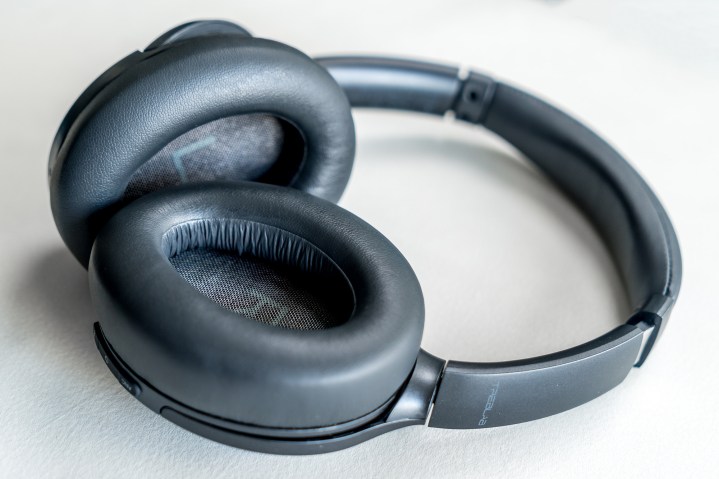
Owing to the included hard shell case, the headphones also fold up to fit inside, scoring some points for portability and protection all at once. Not every pair of cans gets a hard case out of the box, so it’s nice to see Treblab take that seriously.
Despite their IPX4 rating, I would caution you on considering the Z7 Pro for a daily workout routine. The ear cups don’t really breathe, and any buildup of salty perspiration could pose a problem. Maybe not right away, but it eventually could. When I used them for a sweaty workout, I just didn’t like how wet they got. Mind you, it’s not so much the body I was concerned about, it was sweat seeping into the internal components.
Setup and controls
The Z7 Pro have limited physical buttons and ports. On the right, you get the power button, flanked by the Bluetooth and active noise cancellation (ANC) buttons. Further away is the 3.5mm jack, along with an LED indicating connection status. Blue means pairing mode, and green means good to go. The left side has a USB-C port to charge.
All the touch controls lie on the leathery surface of the right ear cup, again echoing Sony’s design. It is well worth your while to study the user manual to fully grasp what the buttons and touch panel can do because it will initially look and feel like a dizzying array of selections. Part of the initial learning curve is to recognize when to tap or swipe. For instance, swiping up or down controls volume, just like swiping forward or backward controls skipping or repeating a track.
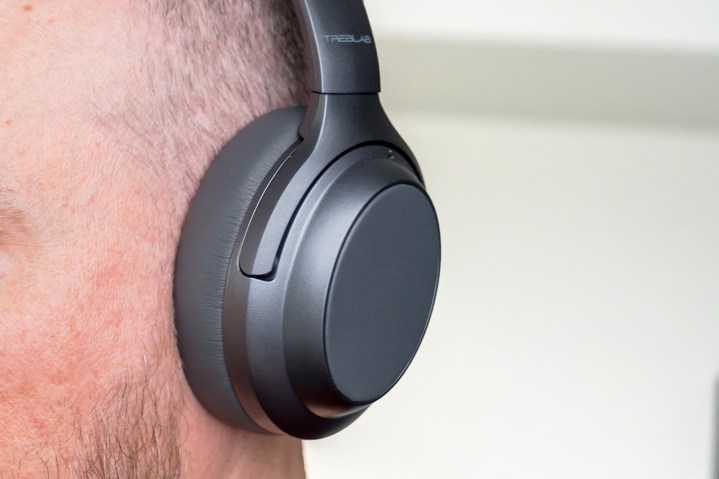
Single taps do nothing. It’s all about the double-tap, which plays/pauses, or answers an incoming call. Doing it again during a call ends it. Careful controlling volume during a call though, because it may also inadvertently end the call, which happened to me. The sensitivity, while decent, is such that you need to learn the subtleties as you go along. Tap and hold will trigger your phone’s voice assistant, and you can also do it to reject an incoming call.
Even though it took time to learn all the touch and physical controls, they ended up being quite effective after a while.
The buttons are easier to manage, though muscle memory will take a little time to set in because all three buttons feel the same when you initially reach for them. Press the ANC button once to toggle Ambient Sound mode. Double-click it to enable ANC. I found this layout confusing, considering that “ANC” is emblazoned on the button. Shouldn’t it be the reverse, where pressing it once gives you noise cancellation? Thing is, when Ambient Sound is on, pressing ANC once turns both it and ANC off. I get that Treblab aimed to keep things simple here, but it took me a while to remember how the sequences went. Despite the time to learn all the touch and physical controls, they ended up being quite effective after a while.
One of the coolest controls is Awareness mode, which lowers volume well enough to hear something in the background. All it takes is to cup your hand over the right cup. Really good for listening to an announcement or briefly talking to someone, like at a point-of-sale, for instance. Wear sensors enable the Z7 Pro to automatically play/pause when removing or putting on the headphones. Both of these are yet again cloned directly from Sony’s cans, the biggest difference being that without a companion app, you can’t turn the Z7 Pro’s wear sensors off.
Sound quality
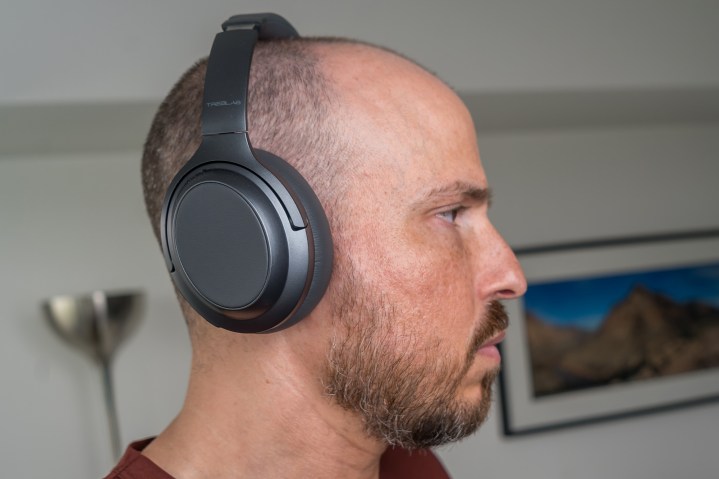
That notably missing app also negates any way to tweak both sound output and onboard controls. In lieu of that, the Z7 Pro have to stand out sonically. There are 40mm drivers and support for aptX HD off the bat, with AAC and SBC rounding out Bluetooth codec support.
The results are impressive. If you like good bass yet want to hear balance from the mids and highs, the Z7 Pro may surprise you with their vibrancy. They pack a punchy sound that booms on the low end, while warming up on the high end, and consistently maintains that for a pretty wide range of musical tastes. I tried multiple genres, often mixing them up randomly, to gauge any radical differences. From hip hop to rock, old school funk, and house, I came away liking listening to long playlists while wearing these headphones.
I still would’ve liked an app though. That’s also where the gap grows between these and the Sony’s I keep mentioning. You have full app support for those, including an EQ to tailor the sound. The Z7 Pro don’t play with the same verve or depth the Sony’s have to begin with, but they’re still impressive for the price.
Listening with the 3.5mm cable plugged in does not disable ANC and Ambient, which is very cool, but you lose out on the touch controls on the right cup. For any adjustments, you have to go to the device playing your content.
Another thing that I found really appealing was how smooth multipoint was.
The wireless sound reminded me of some other over-ears I’ve previously tested, including the Anker Soundcore Life Q30 on the cheaper side, and the Jabra Elite 85h. The Jabra’s offer better overall balance, despite not having aptX support, and generally better phone call quality, but the Z7 Pro really do sound punchier when ANC is on. The Soundcore Life Q30 sound great for their $80 price, and go further with an excellent app to tweak sound further. It’s just that the Z7 Pro have far better controls and still sound very competitive.
Another thing that I found really appealing was how smoothly Bluetooth multipoint worked. I connected to my computer and phone at one point, and then two different phones at another. The Z7 Pro switched to the source I played content from with relative ease. It was easy to listen to music on one phone, and then take a call on another. Granted, some manual intervention may be necessary, but for the most part, it worked better than I thought it would.
ANC performance is par for the course for a mid-range pair of cans, which is to say they will do a good job blocking out low-frequency sounds while struggling more with higher-frequency ones. I can’t really complain about that because it’s very much what I expected, and the results were good enough to listen to tunes in a variety of settings.
I just can’t really say the same about phone calls, where quality is more mediocre than anything else. It’s interesting to me that the Soundcore Q30, at half the price, outperform the Z7 Pro in that arena. It’s not that talking to people sounds terrible for both sides, it’s just that some background noise can seep in during a conversation. You’re fine in quiet places, but not if noise is a factor around you.
Battery life

Treblab rates battery life at up to 45 hours with ANC off, and 30 hours with it on. You will only hit those marks if you leave volume at the default level the whole time, which I find very unlikely. In my own testing, I hit about 25 hours with ANC on at around 60% volume. Not bad at all for a pair of cans in this range, and similar to Sony’s promise of 30 hours with ANC on for the WH-1000XM4.
It’s harder to measure or quantify an exact number when taking variables into account, like consistently switching between ANC/Ambient and turning them off. Either way, you should be good for at least a few days or more before you need to charge. Good news is that plugging in for 20 minutes fast charges the Z7 Pro enough to play for up to five hours.
Those numbers sort of punctuate what the Z7 Pro are ultimately about. Surprising in good ways, to be sure, and solid performers, even if they stand no chance of winning any awards for how they look. There is a nice mix of sound quality, comfort, portability, noise cancellation, and battery life. Hard to argue when they check some of the most important boxes.
You could argue one of those is also price. At $160, they may not give you a full Sony experience, but if you don’t have Sony money to throw at a set of
Editors' Recommendations
- Sony WH-1000XM6: the design and features we want Sony’s next headphones to deliver
- Best wireless earbuds for 2024: Sony, Bose, Soundcore, and more
- First listen: EarFun’s first over-ear headphones are impressive for $80
- JBL’s $200 Live 3 earbuds get the Tour Pro 2’s touchscreen charging case
- JLab steps closer to Sony and Bose with JBuds Lux ANC headphones



